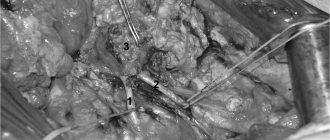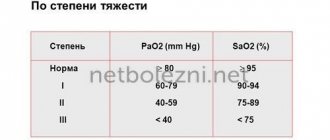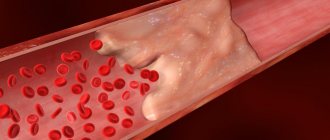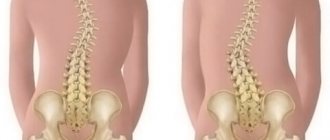general description
Vertebrobasilar insufficiency
is a condition in which there is a decrease in blood supply in the arterial system: basilar and vertebral. As a result of this condition, the nutrition and functions of the brain are disrupted, resulting in irreversible morphological changes in the brain matter.
According to statistical literature, people with vertebrobasilar insufficiency are most often susceptible to strokes in about 25-30% and transient cerebrovascular accidents in 65-70%.
Symptoms of ischemic stroke in the vertebrobasilar region
Lacunar strokes in the vertebrobasilar region occur as a result of damage to a separate paramedian branch of the vertebral artery, common artery or branch of the posterior cerebral artery against the background of arterial hypertension, which is often combined with high levels of lipids in the blood or diabetes mellitus. The disease begins suddenly and is accompanied by dizziness, nausea, and vomiting. There are disturbances in motor function caused by damage to the motor pathways in the area of the base of the bridge, which are supplied with blood by small arteries branching from the main artery:
- incomplete paralysis of facial muscles;
- arm paralysis;
- impaired movement of the arm and leg on one side of the body.
Lacunar infarctions in the thalamus cause the development of a purely sensory syndrome, the cause of which is damage to the lateral parts of the thalamus due to blockage of the thalamogenicular artery. Complete hemisensory syndrome is manifested by a decrease in superficial or deep sensitivity, or numbness of the skin of one half of the body. Some patients have unilateral decrease in sensitivity of the corner of the mouth, palm and foot.
When ischemia spreads towards the internal capsule, a sensorimotor stroke develops. It is manifested by motor impairments, which are preceded by sensory disorders. If the lacunae are located in the area of the bridge, doctors at the Yusupov Hospital determine the following signs of ischemic stroke:
- impaired coordination of movements on one half of the body;
- moderate leg weakness;
- Mild paresis of the arm.
Nonlacunar ischemic infarction in the vertebrobasilar region develops as a result of damage to the short or long circumflex branches of the vertebral or basilar arteries and is manifested by the following symptoms:
- systemic dizziness;
- headache;
- hearing loss with noise in the same ear;
- motor and cerebellar disorders;
- sensory disturbances in one or both limbs of one side of the body.
Blockage of the posterior inferior cerebellar artery is manifested by the following symptoms:
- systemic dizziness;
- nausea;
- vomit;
- swallowing disorder;
- speech and hearing impairment;
- sensitivity disorders on the face of a segmental type;
- cerebellar ataxia (impaired stability) on the side of the ischemic lesion;
- movement disorders, decreased pain and temperature sensitivity on the limbs and torso on the opposite side.
When the branches of the main artery supplying the midbrain are blocked, paresis of the muscles innervated by the oculomotor nerve occurs on the side of the lesion and paralysis of the limbs on the opposite side. With a heart attack in the quadrigeminal artery basin, upward gaze paralysis and convergence insufficiency develop, which is combined with involuntary high-frequency oscillatory eye movements.
Cerebellar infarction in most cases occurs due to cardiac or arterial embolism of the anterior inferior cerebellar artery or superior cerebellar artery.
Blockage of the vertebral artery can occur both inside and outside the skull. When the extracranial section is blocked, the following symptoms are noted:
- short-term loss of consciousness;
- systemic dizziness;
- visual impairment;
- oculomotor and vestibular disorders;
- violations of statics and coordination of movements.
Often, patients suddenly fall, their muscle tone is impaired, autonomic disorders develop, breathing and cardiac activity are impaired.
Main symptoms of dizziness
The symptoms of vertigo depend on the pathology that caused it; characteristic manifestations of dizziness include:
- Numbness of the facial area and limbs;
- Feeling of objects rotating;
- Presence of nausea and vomiting;
- Increased arterial hypertension;
- Flashing “flies” before the eyes;
- Tinnitus and temporary hearing loss.
As a rule, all of the listed symptoms begin to be felt during certain actions: when rotating the head, sharp bends and lifts, concentrating on moving objects, traveling in public or private transport. In cases where a person constantly experiences weakness and dizziness, treatment and consultation with a doctor are mandatory.
4.Treatment
Therapy is determined by the diagnostic results, anamnestic and clinical nuances of a particular case. However, smoking and drinking alcohol are always strictly contraindicated during VBI (both represent not medical propaganda, but a real danger to health and life). You should also adjust your usual diet, reducing the consumption of sodium ions to the maximum, i.e. regular table salt. Often, just eliminating destructive habits and following a low-salt diet is enough to normalize your well-being. Otherwise, angioprotectors, ATP inhibitors, thrombolytics, antiplatelet agents, beta blockers, nootropics, exercise therapy, massage of the collar area, physiotherapy and reflexology procedures, and in some of the most severe cases, for example, when VBI is caused by a mechanical effect on the arteries - surgical intervention to restore free blood flow and prevent ischemic necrosis (stroke) of brain tissue.
Considering such an extensive arsenal of therapeutic agents, the prognosis for vertebrobasilar syndrome in most cases is quite favorable, however, the necessary conditions for this are timely consultation with a doctor and compliance with all instructions received, even if they seem too numerous (in this regard, it is worth recalling that medications and procedures are prescribed not according to the principle “at the choice and discretion of the patient,” but rather as a unified system of complementary measures).
Symptoms of VBI
Manifestations of vertebrobasilar insufficiency are very similar to cerebral ischemia. In the presence of transient ischemic attacks, the patient becomes noticeable with specific symptoms that are temporary in nature, for example: pressing pain in the occipital part of the head, localization of pain in the neck, dizziness and disturbance of spatial orientation.
The following symptoms may be constant companions of VBI:
- Decreased attention and memory impairment;
- The appearance of tinnitus and hearing impairment;
- Fatigue and slow reactions;
- The presence of frequent and sudden dizziness;
- Difficulty swallowing and feeling of a lump in the throat.
Patients, describing the picture of dizziness, give it the following characteristic: “moving in space while standing in one place.” Especially, these symptoms are often observed in those who are 50 and older. Specialists at the Doctor clinic in St. Petersburg successfully deal with the problems of treating dizziness in older people, helping them quickly return to their usual rhythm of life.
Treatment of dizziness at the Doctor clinic
Doctors at our clinic specialize in problems of cerebrovascular accidents, malfunctions of the vestibular apparatus and deal with:
- Treatment of cervical dizziness;
- Treatment of positional vertigo;
- Treatment of severe pain due to dizziness;
- Treatment of dizziness in women and men.
If the patient has an acute phase of VBI, we recommend complex therapy in a hospital setting. When treating dizziness, drugs are used that reduce blood clotting, dilate blood vessels, improve cerebral circulation and the outflow of venous blood.
Our doctors use alternative medicine methods for successful conservative treatment of vertebrobasilar insufficiency and symptoms of dizziness, including:
- Hirudotherapy (treatment with medicinal leeches);
- Light drainage massage of the neck-collar area and head;
- Osteopathic treatment of disorders in the cervical spine;
- Reflexology procedures.
If you still have questions, then sign up for a consultation with a specialist by phone: +7
Causes of vertebrobasilar insufficiency
Most often, vertebrobasilar insufficiency occurs:
- against the background of osteochondrosis;
- due to genetic predisposition;
- congenital pathologies;
- cervical spine injuries;
- inflammation of the vascular walls;
- stenosis and atherosclerosis;
- diabetes mellitus;
- high blood pressure;
- increased thrombus formation and impaired arterial patency;
- dissection of the arterial wall;
- compression of the vertebral and/or basilar artery by hernias, pathologically displaced or overgrown vertebrae, hypertrophied muscles.
Anatomical and physiological features of the blood supply to the brain
Nature has subtly invented the coexistence of two separately functioning sources of blood supply to the brain:
- internal carotid arteries;
- vertebral arteries.
These arteries are paired. They form two corresponding arterial basins: carotid and vertebrobasilar.
The common carotid artery arises from the aorta and further divides into the internal and external carotid arteries. They are located in the lateral area of the neck on both sides. The anterior and middle cerebral arteries depart from the internal carotid, supplying most of the brain (almost 70%).
The vertebral arteries are branches of the subclavian arteries and pass through special openings in the cervical vertebrae. Through the foramen magnum they enter the skull, where they unite into the unpaired basilar artery. Next, the arteries of the carotid and vertebrobasilar areas form the circle of Willis arteries.
This allows, in critical situations, to keep part of the blood flow undisturbed and avoid total ischemia of the brain tissue. 30% of cerebral blood flow is carried out by the arteries of the vertebrobasilar region.
Treatment
Treatment of vertebral (vertebral) artery syndrome consists of two main areas: improving hemodynamics and treating diseases that lead to compression of the vertebral arteries.
Drug treatment
Anti-inflammatory and decongestant therapy is aimed at reducing perivascular edema resulting from mechanical compression. Drugs that regulate venous outflow (troxerutin, ginkgo biloba, diosmin). NSAIDs (Celebrex, lornoxicam, celecoxib)
Vascular therapy is aimed at improving blood circulation in the brain, since hemodynamic disturbances occur in 100% of patients with this syndrome. Modern diagnostic methods make it possible to evaluate the effectiveness of treatment with these drugs and the dynamics of blood flow in the vessels of the brain using ultrasound examination. The following drugs are used for vascular therapy: purine derivatives (trental), vinca derivatives (vincamine, vinpocetine), calcium antagonists (nimodipine), alpha-blockers (nicergoline), instenon sermion.
Neuroprotective therapy
One of the most modern areas of drug treatment is the use of drugs to improve energetic processes in the brain, which allows minimizing neuronal damage due to episodic circulatory disorders. Neuroprotectors include: cholinergic drugs (citicoline, gliatiline), drugs that improve regeneration (Actovegin, Cerebrolysin), nootropics (piracetam, Mexidol), metabolic therapy (mildronate, Thiotriazoline, Trimetazidine)
Symptomatic therapy includes the use of drugs such as muscle relaxants, antimigraine drugs, antihistamines and others.
Treatment of degenerative diseases includes non-drug treatment methods, such as exercise therapy, physiotherapy, massage, acupuncture, and manual therapy.
In most cases, the use of complex treatment, including both drug and non-drug treatment, can reduce symptoms and improve blood circulation in the brain.
Surgical treatment methods are used in cases where there is severe compression of the arteries (disc herniation, osteophyte) and only surgical decompression can achieve a clinical result.
2. Reasons
Vertebrobasilar insufficiency can be transient, chronic or progressive; by origin - congenital or acquired. The most common causes and factors that can impede the blood supply to the brain in the vertebrobasilar area are given below, and this list cannot be considered complete:
- various diseases of the vessels supplying the brain with blood (atherosclerosis, thrombosis, vasculitis, congenital anomalies, etc.);
- arterial hypertension syndrome;
- compression of the arteries due to certain pathological changes in the spinal column;
- diabetes;
- pathology of muscle and connective tissue (overgrowth);
- intrauterine trauma;
- vascular spasm due to intense pain, etc.
In addition, hereditary predisposition plays a certain role in the development of VBI.
Visit our Neurology page










